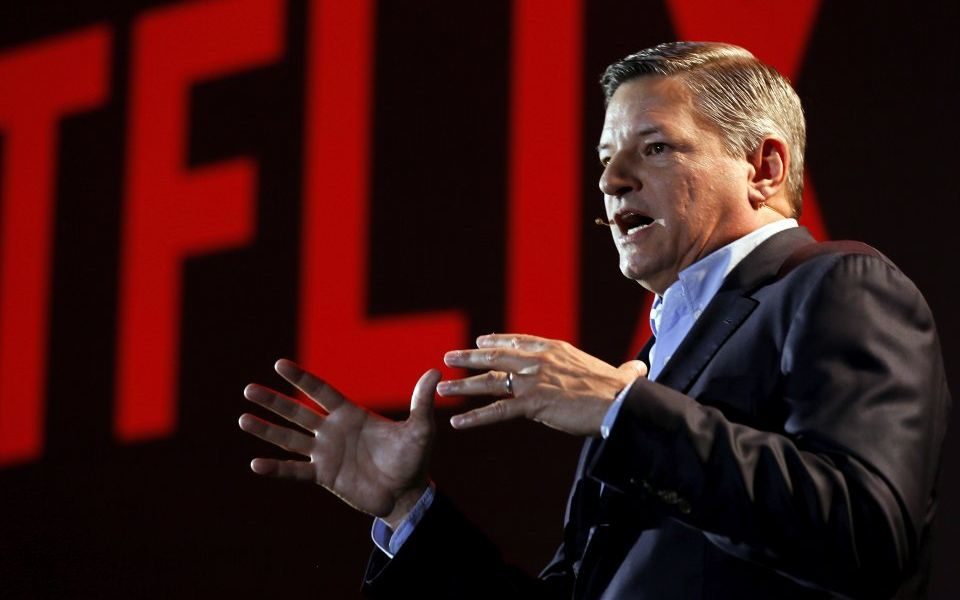Netflix loses its chill: Four ways the streaming giant can recover

Netflix shares dropped roughly 11 per cent when Wall Street opened today, as bleary-eyed investors reacted to a disappointing set of second-quarter results.
The streaming firm posted a 26 per cent rise in revenue to $4.9bn (£3.9bn), but added just 2.7m worldwide subscribers, well below its 5m forecast.
Read more: Netflix to open huge UK production hub
Netflix blamed the figures on price rises in the US and the UK earlier this year, and admitted its “content slate” had not delivered as many new subscribers as hoped.
The Silicon Valley firm, which has enjoyed vast success with original shows such as Stranger Things and The Crown, burst through the 150m subscriber mark, and the results are not all doom and gloom.
But the figures have undoubtedly sparked jitters among analysts amid concerns the company is starting to lose its shine.
So, as new competitors close in, what’s next for the king of streaming?
Read more: Netflix to open huge UK production hub at Shepperton Studios
1. Lose Friends and (don’t) alienate people
Netflix has garnered critical and popular acclaim for its collection of films and TV shows, both original and external.
But the admission of underperformance by its content slate – otherwise known as new films and shows – indicates just how heavily the company relies on delivering new hits each quarter.
As a result, Netflix may be shifting its strategy.
While Netflix Originals tend to grab the headlines, the company has always relied on a solid foundation of reliable, but unoriginal, films and TV shows to draw in subscribers.
But with the firm set to lose Friends and the US version of The Office – two of its biggest crowd pleasers – it will likely turn its attention to original programming.
Netflix has said the loss of these hit series will free up more of its budget for original programme, and this may be just what is needed.
The ‘Netflix and Chill’ model of casual browsing looks to be drawing to a close. Instead, the platform must become a source of exclusive hits that viewers actively seek out.

2. Ramp up its global reach
One of the most alarming figures in Netflix’s results was the revelation that the firm lost roughly 130,000 subscribers in the US.
With interest in its home market waning, the key to the firm’s future success may well be its global appeal.
Earlier this month the Silicon Valley giant unveiled plans to set up a huge production hub at the iconic Shepperton Studios near Heathrow, in what it described as a show of confidence in the UK’s creative offering.
Netflix also confirmed yesterday that it will launch a mobile-only service in India at more affordable prices, and this expansion may be a key factor behind the firm’s ambitious targets of adding 7m new subscribers in the third quarter.
“[Netflix’s] overseas markets will continue to attract new subs thanks largely to its successful partnership strategy with cable, pay TV and telco providers,” said media analyst Paolo Pescatore.
Whether or not Netflix can maintain its levels of subscriber growth, its likely the firm will look to shore up its roots around the globe before the competition heats up any further.
3. Solve the churn challenge
To date, Netflix has towered over its principle rival Amazon Prime. But now the landscape is beginning to shift.
Disney Plus is set to launch later this year and, with its vast portfolio of content, it poses perhaps the biggest challenge to Netflix’s dominance. Over the next year, Apple, Warner Media and NBC will also join the streaming party.

As the first mover, Netflix has an obvious advantage. But as new competitors enter the fold, the company will have to battle against customer churn, as subscribers sign up to binge a series before cancelling and moving to a rival.
“Churn isn’t necessarily a negative thing if the subscription video on-demand services can find the right moments and messaging to target consumers to (re)-subscribe when content appealing to them is released,” said Mihir Haria-Shah, head of broadcast at Total Media.
But he warned churn could become so ingrained that new subscriber statistics become misleading.
If consumers begin to bounce between services, Netflix – and all its competitors – will need to work out how to win their loyalty.
Read more: Long story short: What investors can learn from Carl Icahn and Netflix
4. Turn off the ad block
Netflix is adamant that it will not introduce advertising, but the disappointing results will put this approach under greater scrutiny.
As production costs increase and competition grows, it seems unlikely that Netflix can continue to hike its prices without shedding subscribers. As a result, advertising may become the only way for Netflix to stay ahead of the pack.

Read more: Netflix hikes prices by 20 per cent – is it enough?
But Dave Castell, general manager at ad tech firm The Trade Desk, said this advertising may not be restricting to traditional TV formats.
“We’ve already seen Netflix experiment with marketing partnerships and product placements, and it’s likely that it will continue to trailblaze even more innovative forms of advertising – with brands creating bespoke content to complement consumers’ viewing experience,” he said.
Main image credit: Getty